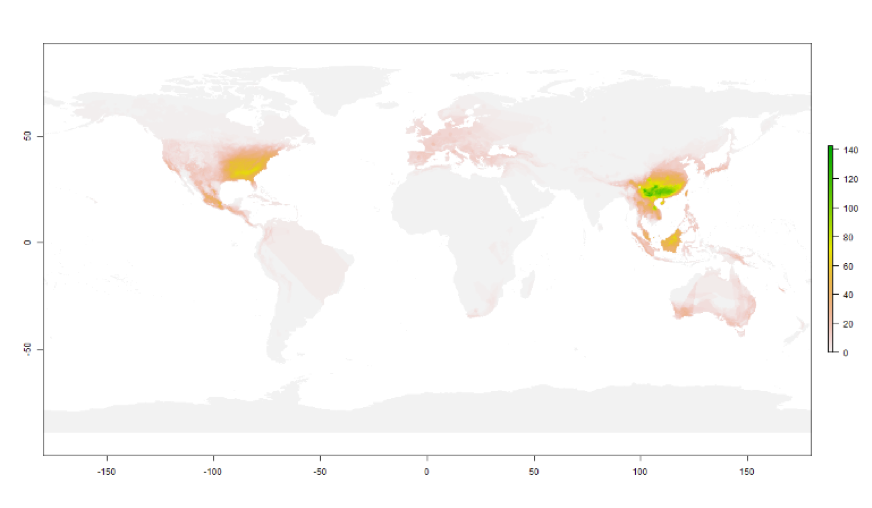GDPlants
GDPlants – Global Distribution Patterns of Plants
The large-scale patterns of biodiversity are one of the most important issues in macroecology and biogeography. The contemporary biodiversity patterns are results of an eco-evolutionary process including several factors, i.e. adaptation and radiation of lineages, contemporary climate, past climate, topography, etc.
In this project, we are going to build species distribution maps and clade richness maps for the target plant families. Combining contemporary and historic climate, phylogeny, functional data and a processed based simulation model, we aim to explain how eco-evolutionary processes have led to the contemporary biodiversity patterns.

Biodiversity map of Fagales based on the processed based simulation model.
Here we are focusing on the following questions:
- Mapping the global distribution patterns of plant families. First, we are going to build the mapping pipeline. With distribution data from public databases, we will construct the species distribution maps and further family richness maps.
- How did the evolutionary history shape the contemporary Fagales richness distribution? With the distribution data we collected and the phylogeny data provided by collaborators, we are going to reconstruct the evolutionary history of Fagales and explore how it has shaped its current distribution.
- Exploring the mechanism behind different plant distribution patterns. We will focus on the implementation of a more complex mechanistic model, developed in our research group. We aim to investigate under which circumstances the implementation of these models are able to reconstruct and explain the different plant distribution patterns.
